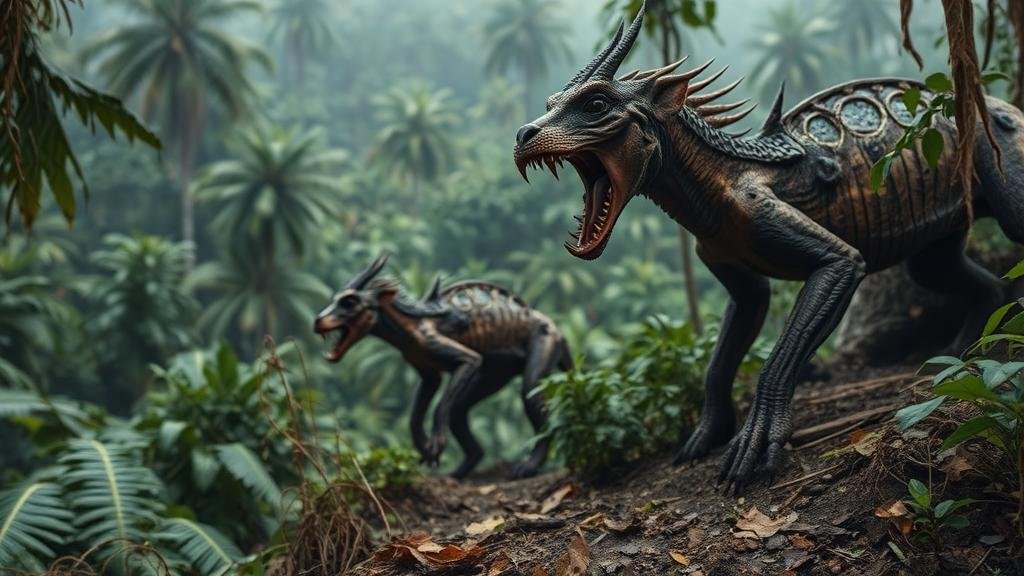Documenting encounters with rare, unknown creatures in dense jungle terrains.
Documenting Encounters with Rare, Unknown Creatures in Dense Jungle Terrains
The exploration of dense jungle terrains has long fascinated adventurers, scientists, and researchers alike. These biodiverse ecosystems are rich in unique flora and fauna, many of which remain undiscovered or poorly understood. Documenting encounters with rare, unknown creatures in these settings not only enhances our understanding of biodiversity but also contributes to conservation efforts. This article delves into the methodologies, historical significance, and the experiences one may encounter while navigating these enigmatic environments.
The Historical Context of Jungle Exploration
Jungle exploration is steeped in history, with many notable expeditions leading to the discovery of new species. For example, the expedition led by naturalist Alfred Russel Wallace in the 19th century, primarily in the Amazon and Malay Archipelago, resulted in the identification of thousands of species, laying the groundwork for modern biogeography.
Since then, the allure of the unexplored jungles has driven numerous scientists into remote regions. For example, the 2013 survey conducted by the World Wildlife Fund in the Amazon revealed over 450 new species, ranging from amphibians to plants, showcasing the potential discoveries awaiting researchers.
Methodologies for Documenting Encounters
Effectively documenting encounters with rare creatures involves a combination of preparation, technology, and fieldwork. Here are essential methodologies employed by researchers:
- Field Surveys: Conducting systematic surveys in specific locales, often using randomized sampling techniques to enhance the chances of encountering rare species.
- Camera Traps: Utilizing motion-sensitive cameras to capture images of elusive animals. These devices have been instrumental in monitoring species like the elusive jaguar (Panthera onca) in South America.
- Drones: Employing drone technology to survey inaccessible areas from above, which can provide real-time data on wildlife distribution and habitat characteristics.
Integrating these methods allows for a comprehensive approach, ensuring that encounters are recorded with precision and rigor.
Real-World Applications of Documenting Unknown Creatures
Documenting encounters with unknown species holds significant implications for biodiversity conservation and ecological balance. For example, the discovery of previously unknown species can inform conservation policies and funding. A notable instance is the study of the newly found species of frog, *Pristimantis gigas*, in Ecuador, which led to increased conservation efforts in the area due to its vulnerable status.
Also, documentation aids in understanding ecosystem dynamics. By identifying new species, scientists can better understand food webs and the roles these creatures play within their environments. This information is critical to efforts aimed at combating deforestation and habitat loss.
Challenges and Considerations
While the exploration of jungles presents exciting opportunities, it is not without its challenges. Adverse weather conditions, difficult terrain, and the threat of disease, such as malaria and dengue fever, can complicate fieldwork. Researchers must also consider ethical implications regarding their interactions with rare species and the environments they inhabit.
Plus, there is an innate unpredictability in jungle exploration. Many encounters are spontaneous, often necessitating researchers to be prepared to document findings quickly. Equipment, such as field notebooks, cameras, and recording devices, must be readily accessible to facilitate accurate documentation.
Conclusion: Taking Action Based on Discoveries
The practice of documenting encounters with rare and unknown creatures in dense jungles is critical for advancing scientific knowledge and conservation efforts. Each new discovery not only enriches our understanding of biodiversity but also underscores the importance of preserving these vital ecosystems. As explorers and researchers venture into these rich terrains, the imperative to act on the knowledge gained becomes increasingly clear.
For aspiring researchers, it is essential to:
- Stay informed about the latest technologies and methodologies in field research.
- Engage with local communities to foster conservation awareness and support.
- Collaborate with interdisciplinary teams to ensure a robust approach to biodiversity documentation.
To wrap up, by documenting the unknown and embracing the challenges of jungle exploration, we can pave the way for future discoveries that may hold the key to understanding our planets biodiversity and ecological health.



